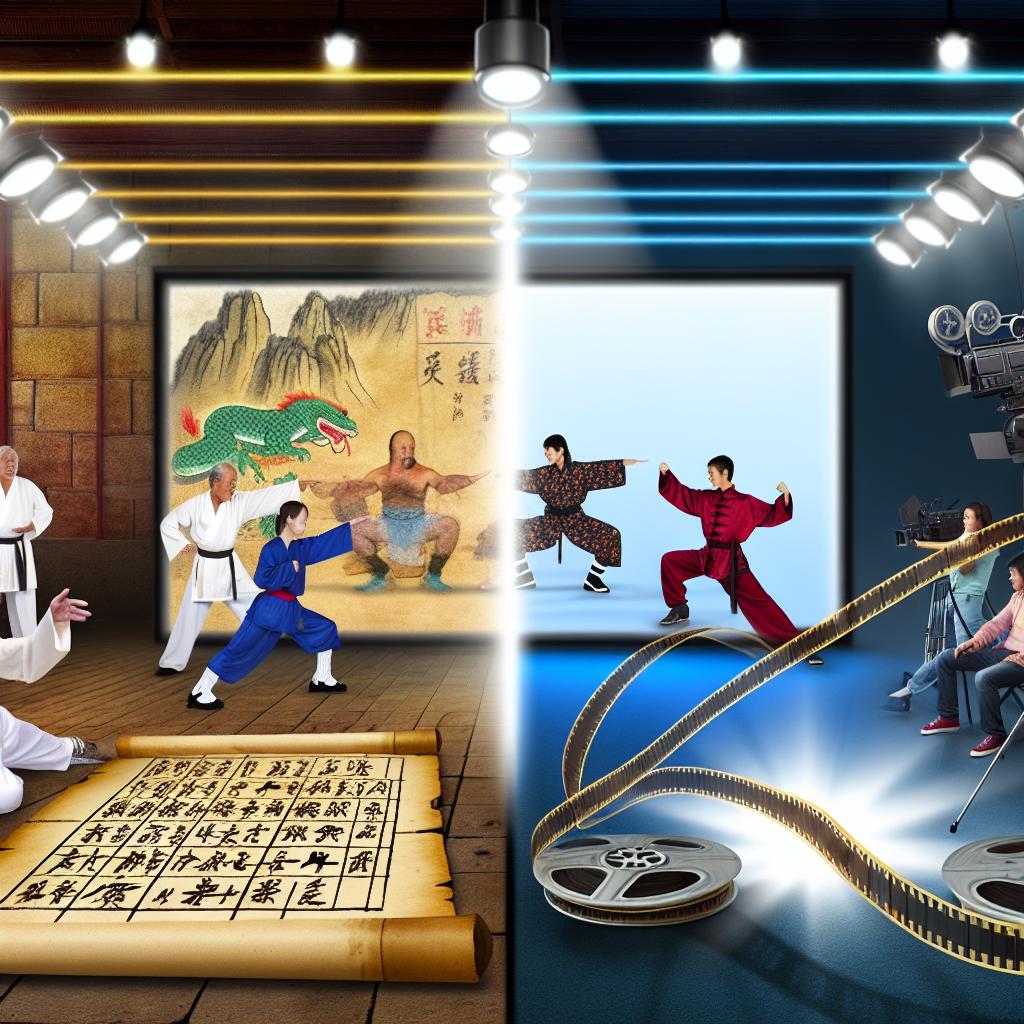
Introduction to Kung Fu’s Cinematic Impact
The emergence of Kung Fu as a dominant theme in martial arts films has significantly reshaped the landscape of action cinema worldwide. During the late 20th century, the popularity of Kung Fu films soared, driven by their unique blend of storytelling, cultural symbolism, and intricate fight choreography. These films entertained audiences and inspired countless filmmakers, actors, and martial artists around the globe.
The rise of Kung Fu films marked a turning point in action cinema, introducing audiences to a whole new world where physical prowess and deep philosophical underpinnings coexisted. The genre not only depicted intense physical combat but also offered narratives steeped in reflection and moral dilemmas, resonating with audiences on multiple levels. This profound amalgamation of art and action laid the groundwork for the genre’s global allure and enduring legacy.
Bruce Lee: Catalyst of the Kung Fu Film Movement
Among the key figures in this cinematic revolution was Bruce Lee. Lee’s dynamic screen presence, coupled with his groundbreaking approach to choreography, redefined action cinema. His portrayal of martial arts in films such as Enter the Dragon and The Way of the Dragon captivated audiences far beyond Hong Kong’s borders. Lee’s melding of philosophy, charisma, and sheer physical prowess transformed him into a cultural icon whose influence has endured through generations.
Bruce Lee was more than just a martial artist; he was a visionary who recognized the potential of cinema to transcend cultural boundaries. His films offered a narrative that combined physical skill with philosophical inquiry, introducing audiences to Eastern philosophies concisely. Lee’s charisma on-screen and his philosophy of martial arts, known as Jeet Kune Do, challenged traditional martial arts norms, encouraging a more fluid and adaptive style. This amalgamation of physical elegance and intellectual depth contributed to his status as a larger-than-life figure in cinematic history.
Transition to Global Appeal
As Kung Fu films gained traction, their influence began to permeate the international film industry. Directors and producers worldwide recognized the universal appeal encapsulated by Kung Fu’s dynamic action sequences and philosophical narratives. Hollywood, in particular, integrated these elements, resulting in a fusion of Eastern and Western cinematic styles. A prime example of such fusion can be seen in films like The Matrix, which owes much of its action choreography to the foundational work laid by Kung Fu cinema.
The growing interest in Kung Fu narratives also led to cross-cultural exchanges in the cinematic industry. Western filmmakers started adopting and adapting elements characteristic of Kung Fu films, introducing them into mainstream cinema. This cultural exchange fostered a newfound respect and appreciation for martial arts cinema, allowing it to find a place in the broader context of global filmmaking. As directors and producers continued to integrate Eastern philosophies into Western film narratives, audiences were exposed to a richer tapestry of cinematic storytelling.
Notable Directors and Innovations
Several notable directors were instrumental in propagating the influence of Kung Fu in cinema, leading to further innovation and exploration. John Woo, for instance, brought a unique style to action sequences by introducing balletic gunplay and stylized violence, notably in his film Hard Boiled. Woo effectively married the principles of martial arts choreography with firearms, creating iconic, high-octane sequences that thrilled audiences worldwide.
Similarly, Ang Lee, with his film Crouching Tiger, Hidden Dragon, revitalized interest in martial arts epics. Through the use of wirework and atmospheric storytelling, Lee appealed to global audiences by presenting martial arts cinema as both visually stunning and emotionally resonant. His work helped to elevate the perception of martial arts films, transforming them from niche genre offerings to respected cinematic works with mainstream appeal. The innovative contributions of directors like Woo and Lee set new benchmarks in the realm of action filmmaking, expanding the possibilities of what martial arts narratives could achieve.
Kung Fu’s Legacy in Modern Cinema
In contemporary times, martial arts films continue to draw inspiration from the legacy of early Kung Fu cinema. The combination of high-intensity action and deeply rooted philosophical themes remains a powerful narrative formula. Contemporary filmmakers strive for innovation while paying homage to the pioneering works of earlier Kung Fu films. This ongoing evolution ensures that Kung Fu’s impact on the film industry remains significant, continually inspiring present and future generations of storytellers.
Current martial arts films benefit from technological advancements, allowing filmmakers to create more intricate and visually striking action sequences. Yet, the core elements that define Kung Fu cinema—philosophical depth and the art of combat—remain integral. These films continue to challenge and entertain audiences, while themes of honor, discipline, and internal conflict endure as central motifs. The lasting appeal of Kung Fu films is evident in the genre’s ability to consistently captivate audiences, signifying its cultural and artistic importance.
In conclusion, Kung Fu films have left an enduring mark on the global cinematic landscape. Their influence extends across various facets of filmmaking, encompassing choreography, directing style, narrative development, and thematic exploration. As a testament to their timeless appeal, Kung Fu films continue to engage and inspire audiences worldwide, ensuring their place in the annals of cinematic history.
This article was last updated on: April 19, 2025

